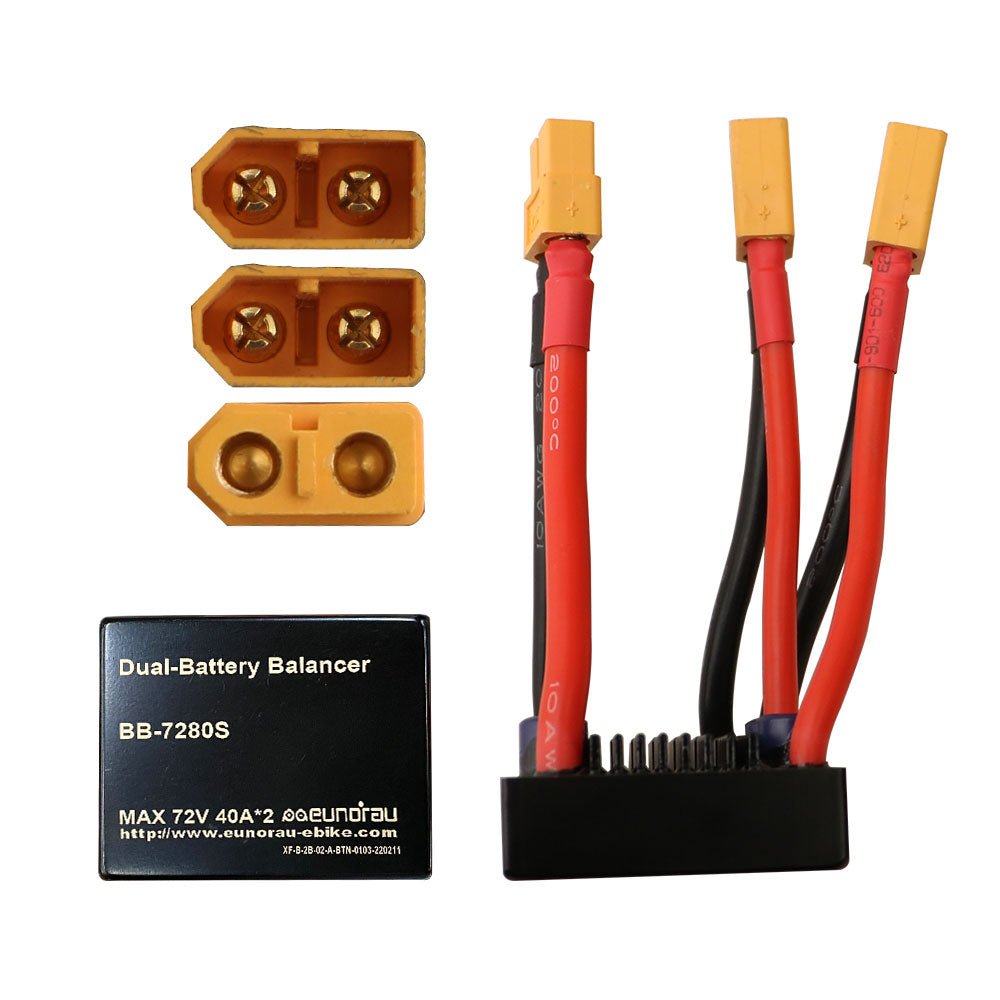No, using a 24V battery on a 36V ebike is not recommended as it can damage the motor and other electronic components. Before making any modifications to your ebike, always consult with a professional technician or the manufacturer to ensure compatibility and safety.
Using the wrong voltage battery can not only affect the performance of your ebike but also pose a risk to your safety. When it comes to electric bicycles, the battery is a crucial component that determines the power and efficiency of the bike.
Ebikes are specifically designed to work with a certain voltage range, and using a battery with a lower or higher voltage than recommended can lead to potential damage to the motor and electrical system. We will explore the implications of using a 24V battery on a 36V ebike and provide insights on why it is not advisable. Let’s delve deeper into the importance of using the correct voltage battery for your ebike to ensure optimal performance and safety.

Credit: www.amazon.com
Understanding The Basics Of Ebike Batteries
When it comes to electric bikes (ebikes), the battery is a crucial component that determines the performance and range of the vehicle. Understanding the basics of ebike batteries is essential for making informed decisions when it comes to upgrading or replacing the battery.
Voltage In Ebike Batteries
Ebike batteries come in various voltages, and the voltage rating directly impacts the power output and speed of the electric bike. The voltage refers to the potential difference between the positive and negative terminals of the battery, measured in volts (V). Higher voltage batteries generally deliver more power and speed, but the specific voltage requirements depend on the motor and other components of the ebike.
24v Vs 36v: What’s The Difference?
When comparing a 24V battery to a 36V battery for an ebike, the primary difference lies in their voltage output. A 24V battery provides 24 volts of power, while a 36V battery delivers 36 volts. The higher voltage of the 36V battery translates to increased power output, which can result in higher speeds and improved performance compared to a 24V battery.
However, it’s essential to consider the compatibility of the battery with the ebike’s motor and electronic components. Using a 24V battery on a 36V ebike or vice versa may not be suitable as it could damage the motor or lead to inconsistent performance. Always ensure that the voltage of the battery aligns with the specifications of the ebike for optimal functionality and safety.
Can I Use A 24v Battery On A 36v Ebike?
Are you considering using a 24V battery on your 36V ebike? This question often arises when ebike enthusiasts want to explore different battery options for their rides. Let’s delve into the compatibility, safety considerations, and impact on performance when using a 24V battery on a 36V ebike.
Compatibility And Safety Considerations
When it comes to using a 24V battery on a 36V ebike, compatibility is a crucial factor to consider. Most ebikes are designed to function optimally with a specific voltage range and using a battery with a different voltage can potentially lead to compatibility issues. Furthermore, safety considerations must be taken into account as mismatched voltages can pose hazards to the ebike electronics and motor.
Impact On Ebike Performance
Using a 24V battery on a 36V ebike can significantly impact the performance of the ebike. The lower voltage of the battery may result in reduced power output, slower acceleration, and overall diminished performance. Additionally, it can lead to premature wear and tear on the components due to the mismatch in power delivery.
Upgrading To A 36v Battery
Considering an upgrade to a 36V battery for your ebike? If you’ve been pondering the idea of swapping out your 24V battery for a 36V one, this section will provide a comprehensive overview of the various aspects associated with upgrading to a 36V battery. We’ll delve into the advantages of using a 36V battery, as well as any installation and compatibility issues you might encounter during the transition.
Advantages Of Using A 36v Battery
Upgrading to a 36V battery presents several notable advantages that are worth considering. Here are some key benefits:
- Increased Speed and Power:
- Extended Range:
- Enhanced Performance:
Installation And Compatibility Issues
When making the switch from a 24V to a 36V battery, it’s crucial to consider the installation process and any potential compatibility issues that may arise:
- Proper Installation:
- Battery Mounting:
- Electronic Compatibility:
Potential Modifications For Using A 24v Battery
If you’re considering using a 24V battery on a 36V ebike, it’s important to understand the potential modifications that may be necessary to make this work. While using a lower voltage battery can be a solution in certain situations, it’s important to be aware of the adjustments that may be required, as well as the risks and limitations associated with this approach.
Adjusting Ebike Components
When using a 24V battery on a 36V ebike, one of the key modifications that may be necessary is adjusting the ebike components to accommodate the lower voltage. This can involve reconfiguring the motor controller to operate at the lower voltage, as well as adjusting the throttle and other electrical components to ensure compatibility with the 24V battery. Additionally, you may need to modify the wiring and connectors to properly integrate the lower voltage battery with the ebike system.
Risks And Limitations
It’s important to be aware of the potential risks and limitations associated with using a 24V battery on a 36V ebike. One of the primary risks is that the reduced voltage may result in decreased performance, including reduced top speed and acceleration. Additionally, using a lower-voltage battery can place additional strain on the motor and other components, potentially leading to premature wear and decreased overall reliability. It’s important to carefully consider these factors before pursuing this modification.
Expert Recommendations And Considerations
When considering using a 24V battery on a 36V ebike, it’s essential to seek expert recommendations and carefully consider various factors before making any decisions. Insights from industry professionals and best practices for ebike battery upgrades can provide valuable guidance in ensuring a safe and optimal solution.
Insights From Industry Professionals
Industry professionals emphasize the critical importance of maintaining the intended voltage requirements for an ebike. Using a lower voltage battery than what the ebike is designed for can result in inadequate power and may potentially damage the motor or other electrical components. It’s recommended to consult with ebike manufacturers, technicians, or experienced professionals who can offer tailored advice based on the specific model and requirements of the ebike.
Best Practices For Ebike Battery Upgrades
- Ensure compatibility: Before considering any battery upgrade, verify that the new battery is compatible with the existing components of the ebike, including the motor, controller, and charging system.
- Consult with experts: Seek guidance from knowledgeable individuals or companies with expertise in ebike technology to determine the safest and most effective battery upgrade options.
- Consider comprehensive upgrades: Instead of simply changing the battery voltage, it may be beneficial to explore comprehensive upgrades that address the entire power system, ensuring seamless integration and optimized performance.
It’s important to always prioritize safety and performance when exploring battery upgrades for ebikes. By following expert recommendations and considering best practices, ebike enthusiasts can make informed decisions that enhance their riding experience while safeguarding the integrity of their ebike’s electrical system.
Frequently Asked Questions On Can I Use A 24v Battery On A 36v Ebike?
Can I Use A 24v Battery On A 36v Motor?
Yes, you can use a 24V battery on a 36V motor, but it may not work optimally.
Can I Put A Higher Voltage Battery On My E-bike?
Yes, you can put a higher voltage battery on your e-bike, but it’s essential to ensure compatibility with the motor and controller for optimal performance and safety. Upgrading to a higher voltage battery may increase speed and range, but it can also impact the warranty and potentially damage the e-bike components.
Will A 24v Controller Handle 36v?
No, a 24V controller is not designed to handle 36V. Using a 36V power source with a 24V controller can cause damage and is not recommended. It’s important to match voltage requirements for optimal performance and safety.
What Is The Difference Between 24v And 36v Battery?
A 24V battery provides less power than a 36V battery, making it suitable for lighter equipment. The higher voltage of a 36V battery allows for more power and better performance in heavy-duty machinery.
Conclusion
The compatibility of a 24V battery with a 36V ebike hinges on various factors. It’s crucial to consider the technical specifications and the potential impact on performance. Proper assessment and expert guidance can help determine if it’s feasible to use a 24V battery on a 36V ebike without compromising safety and efficiency.



